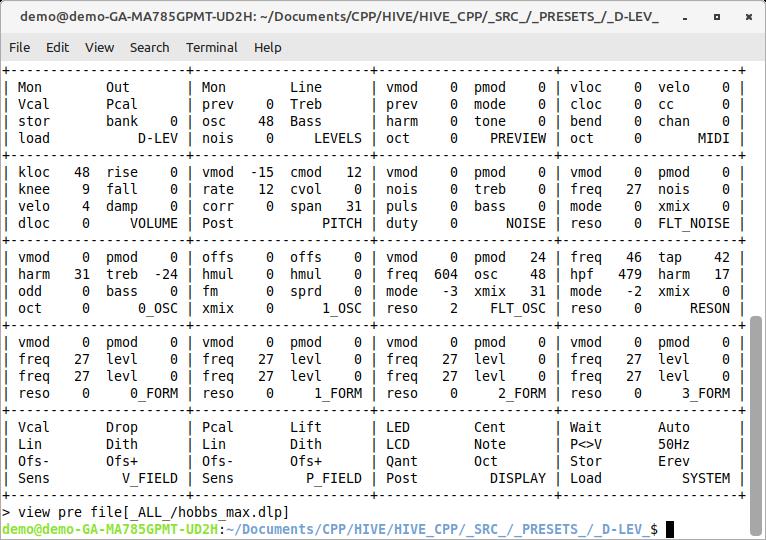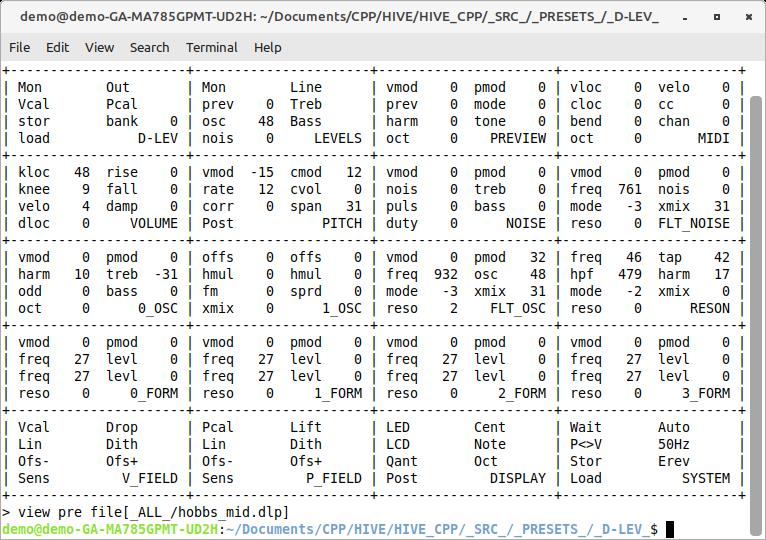Rob's Hobbs
A few months ago Rob got in touch with me, wondering if I might take a look at his Hobbs Theremins. Rob actually owns two Hobbs, one in a natural wood finish and one in a piano black finish. I said of course, and Rob sent me additional information on them to help diagnose the issue, which was intermittent operation triggerable by tapping on the enclosure of the black unit. I took some pix of both, though much more of the natural unit, and thought it would be nice to share them with you, which Rob and Charlie have graciously agreed to. The album is located here: http://www.thereminworld.com/album/rob-schwimmers-hobbs/17805?photo=17806
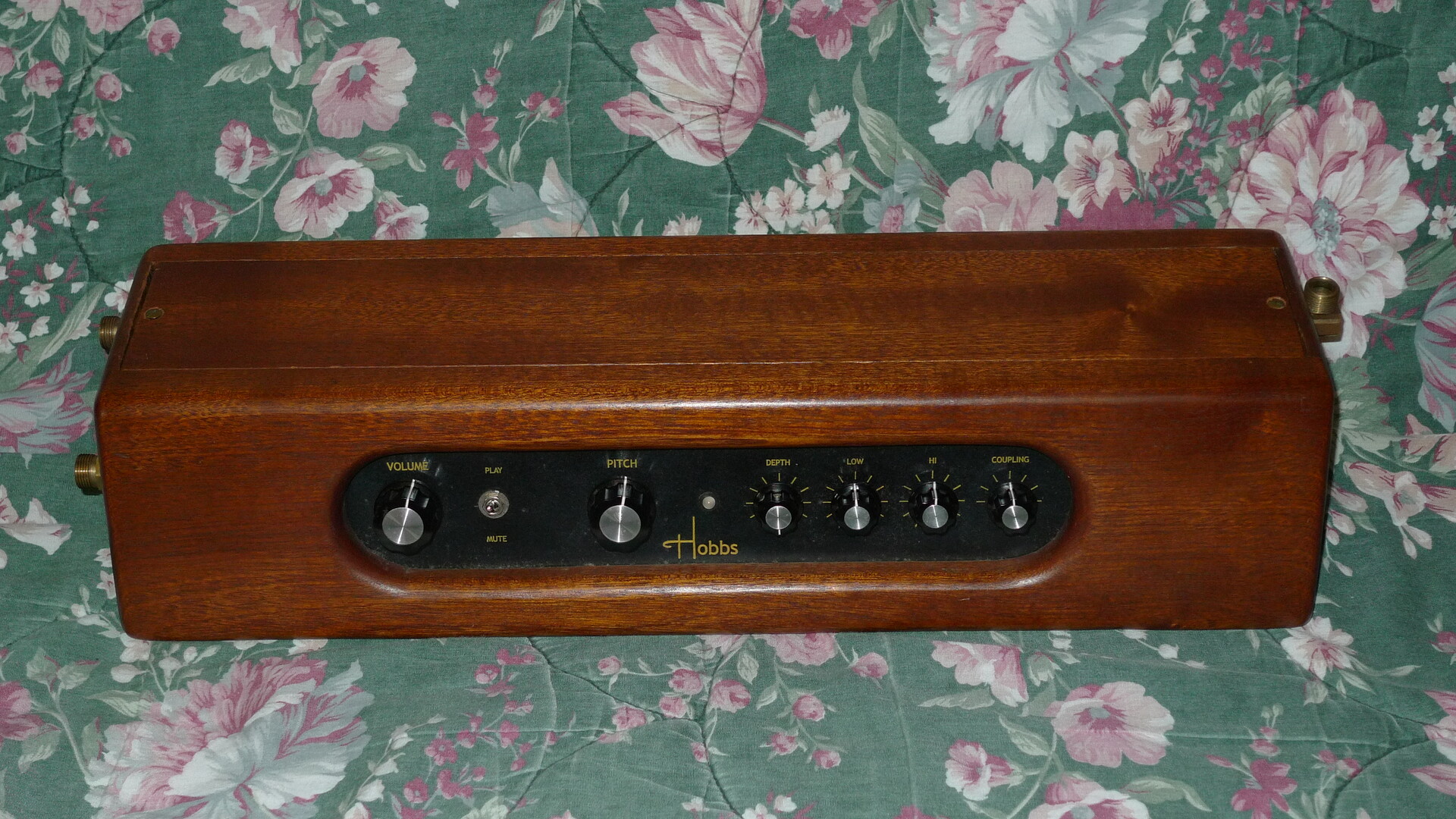
Above: the musician's view of the control panel. Left to right: VOLUME field knob, mute switch, PITCH field knob, LED indicator, DEPTH knob, LOW knob (bass), HI knob (treble), COUPLING knob (oscillator coupling). Gobs of Rob's Hobbs' knobs! ![]()
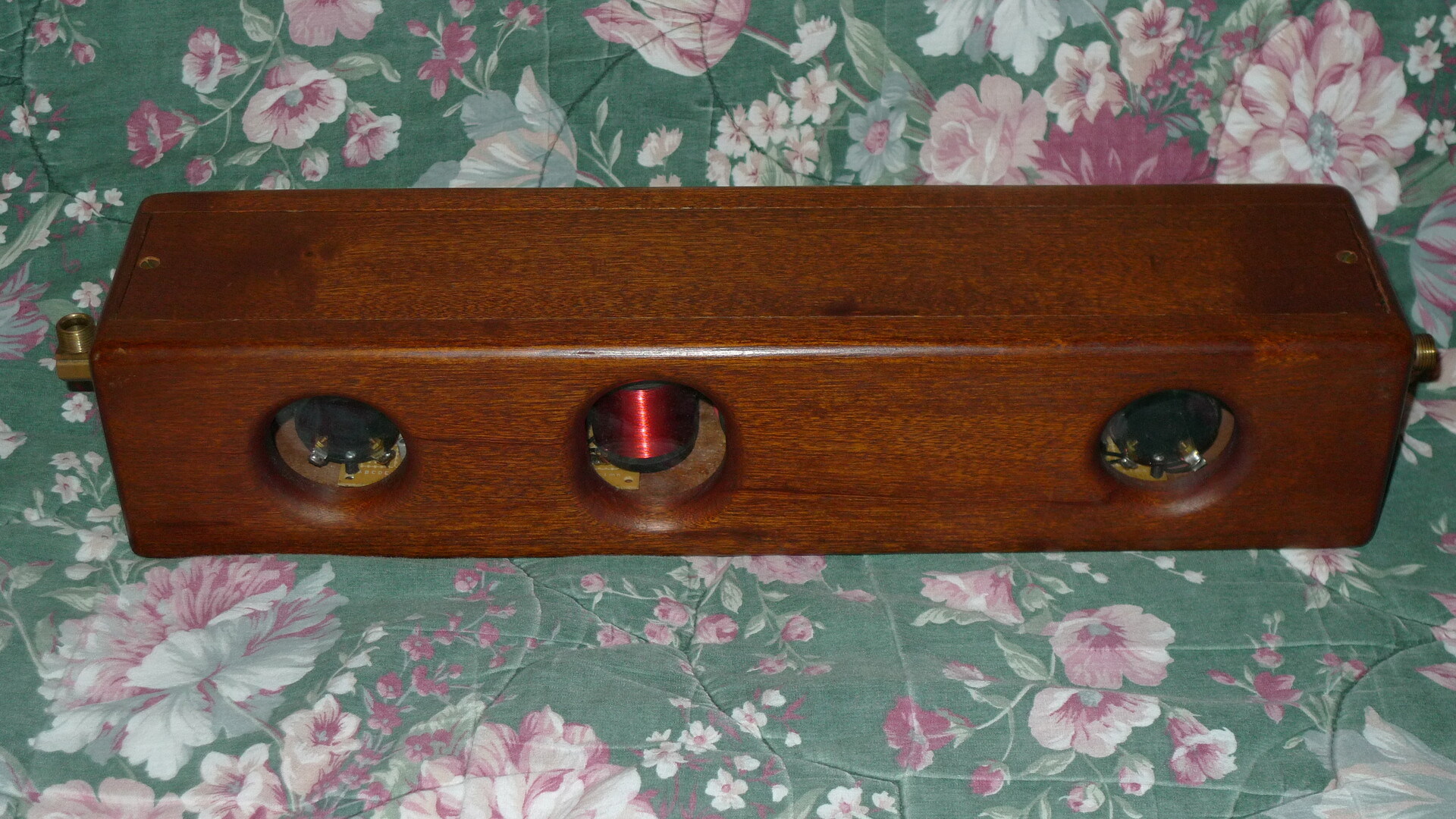
Above: The audience view. The coils visible through windows are actually hand wound transformers for the variable pitch, fixed pitch, and volume oscillators.
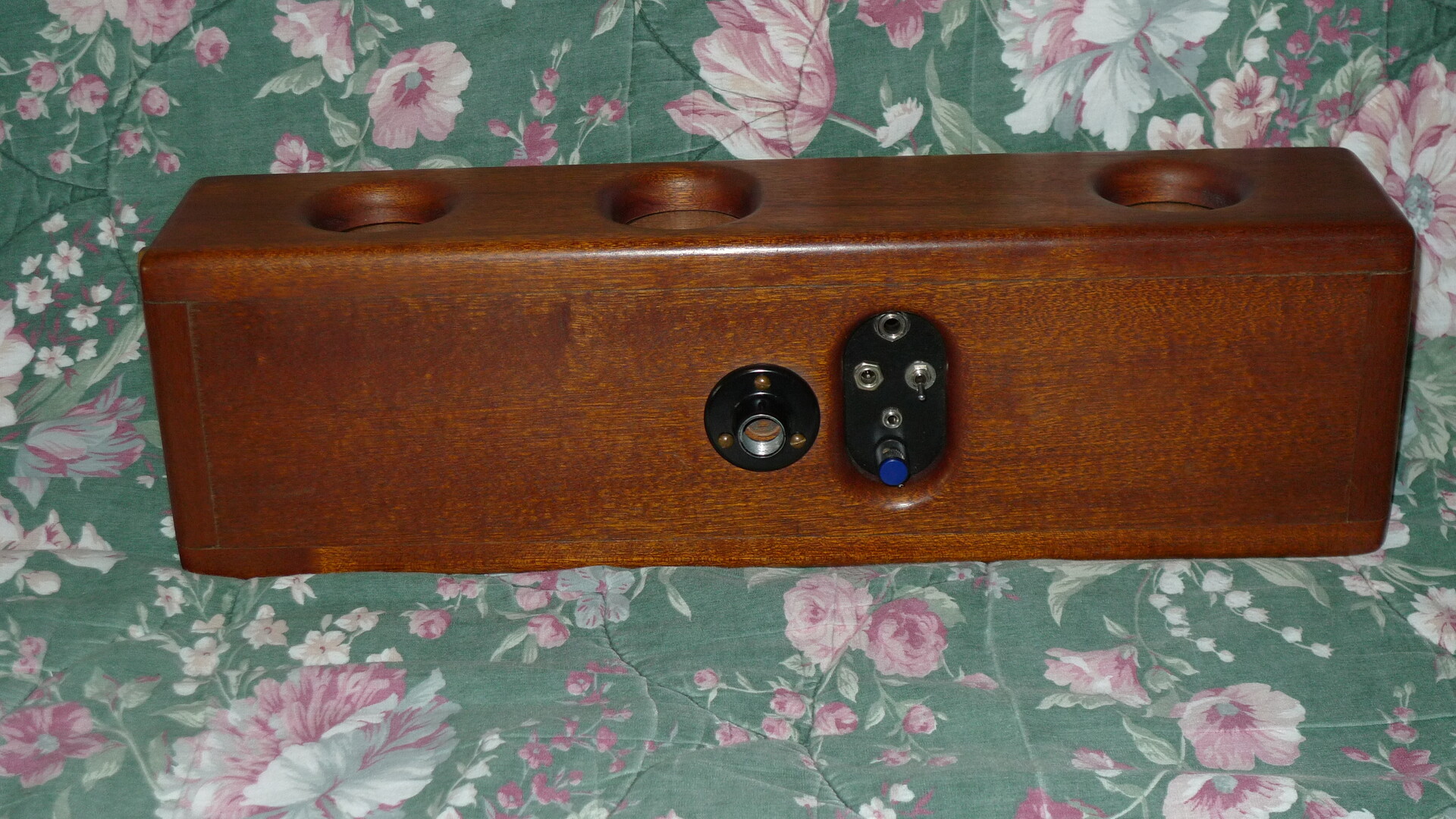
Above: The bottom of the unit, with female microphone flange and I/O panel. On the panel is barrel connector power in, 1/4" line out, 1/8" pitch preview out with volume knob and mode switch. I replaced the microphone flange with a new Atlas unit because this one was stripped out (aluminum doesn't make for the most durable of threads).
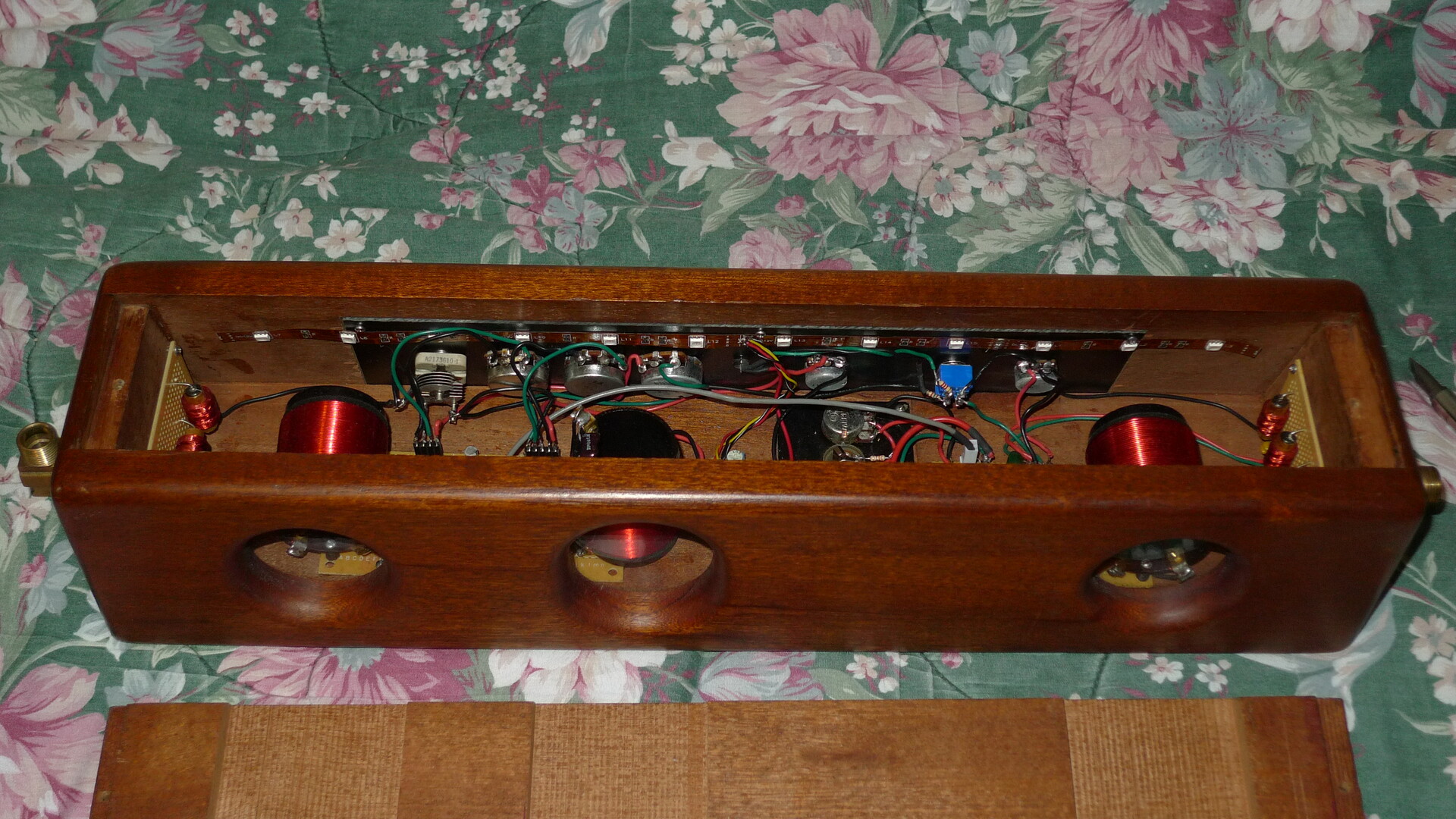
Above: Unit with the top removed looking at the back of the control panel. You can see that the COUPLING control is a variable capacitor.
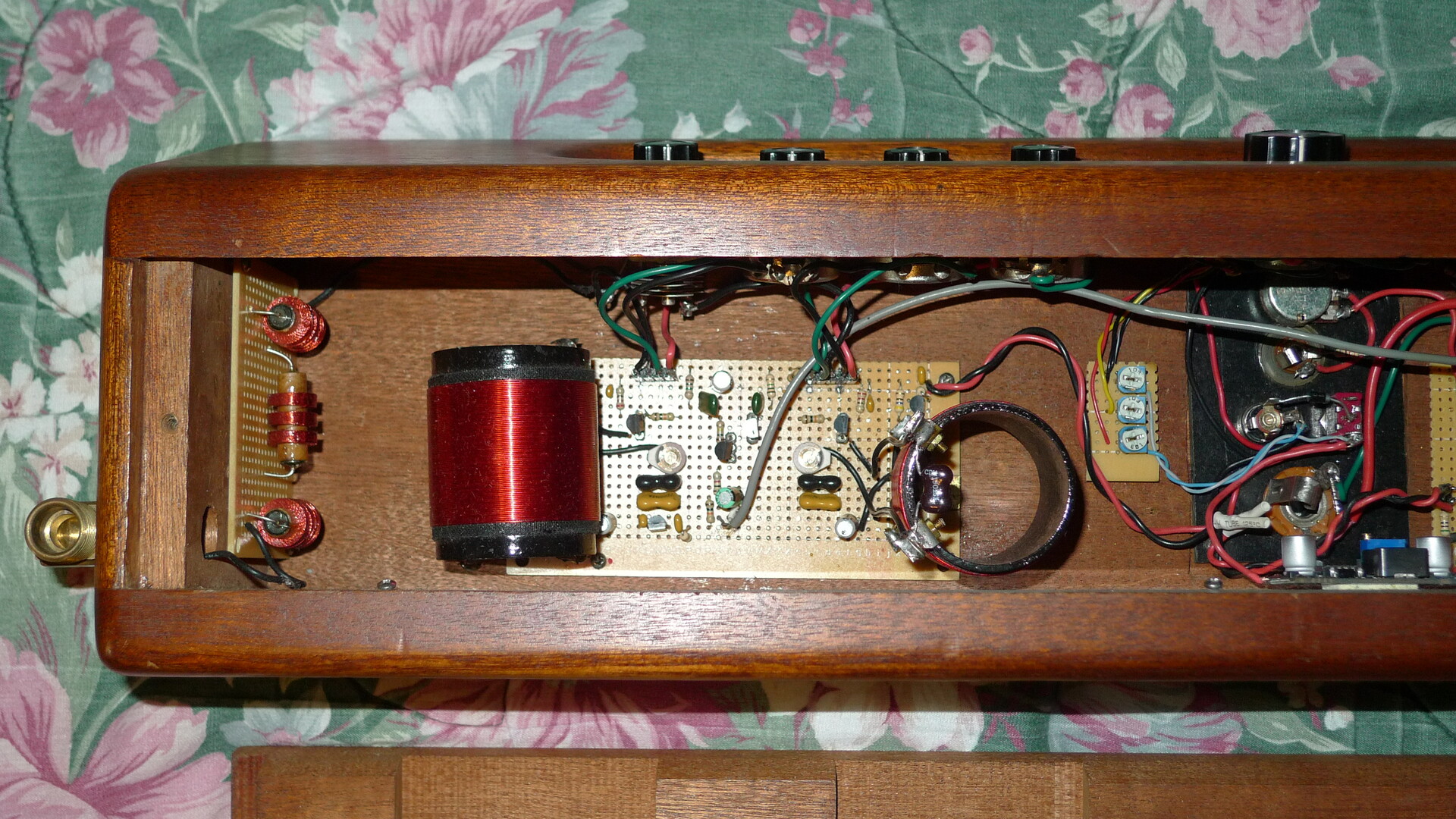
Above: To the left you can see the 3x RF chokes for the pitch antenna series inductance. The PCBs are hand wired on phenolic vector board. I believe the three trim pots to the right are to set the RGB LED internal illumination.
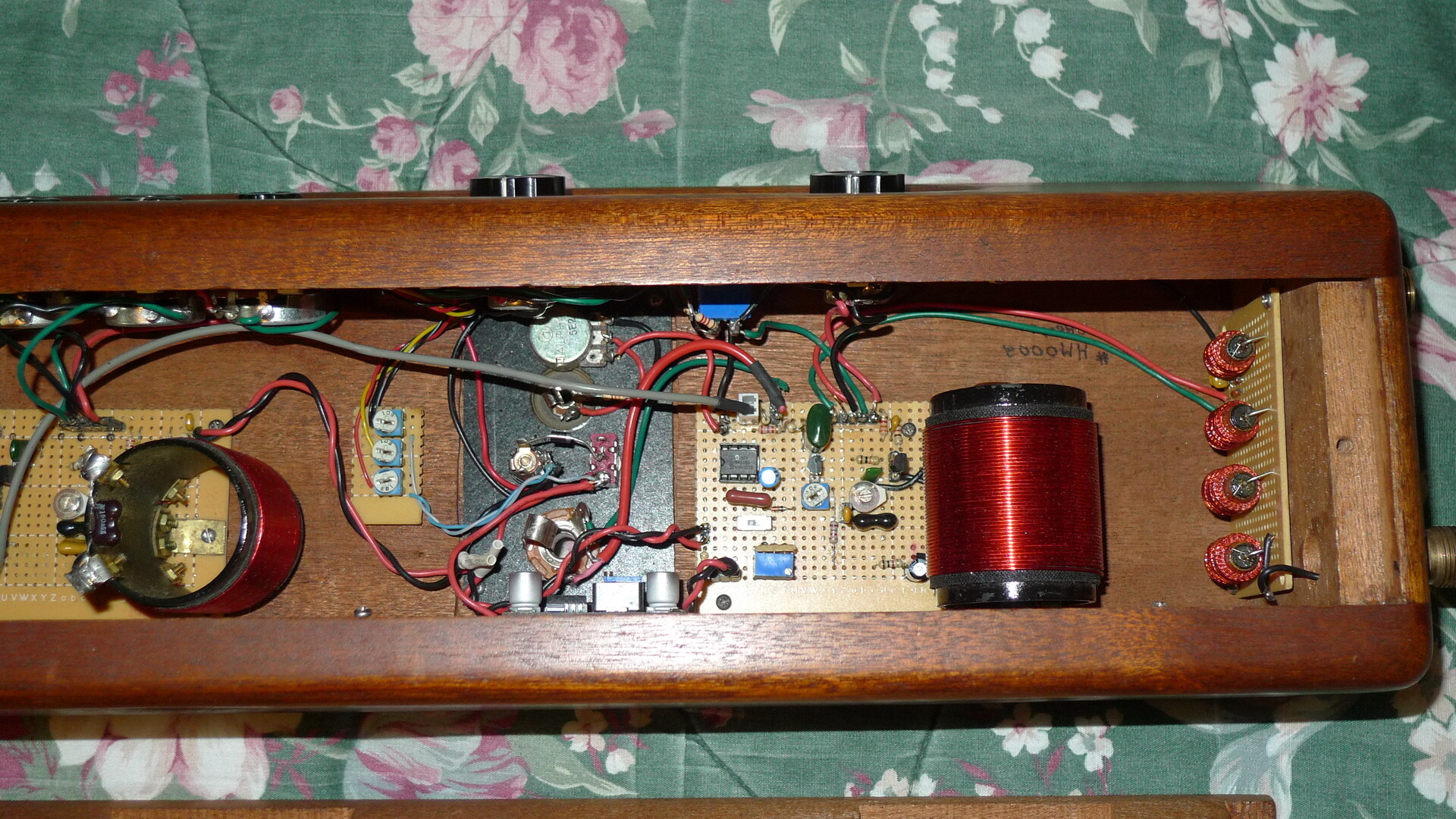
Above: To the right you can see the 4x RF chokes for the volume antenna series inductance.
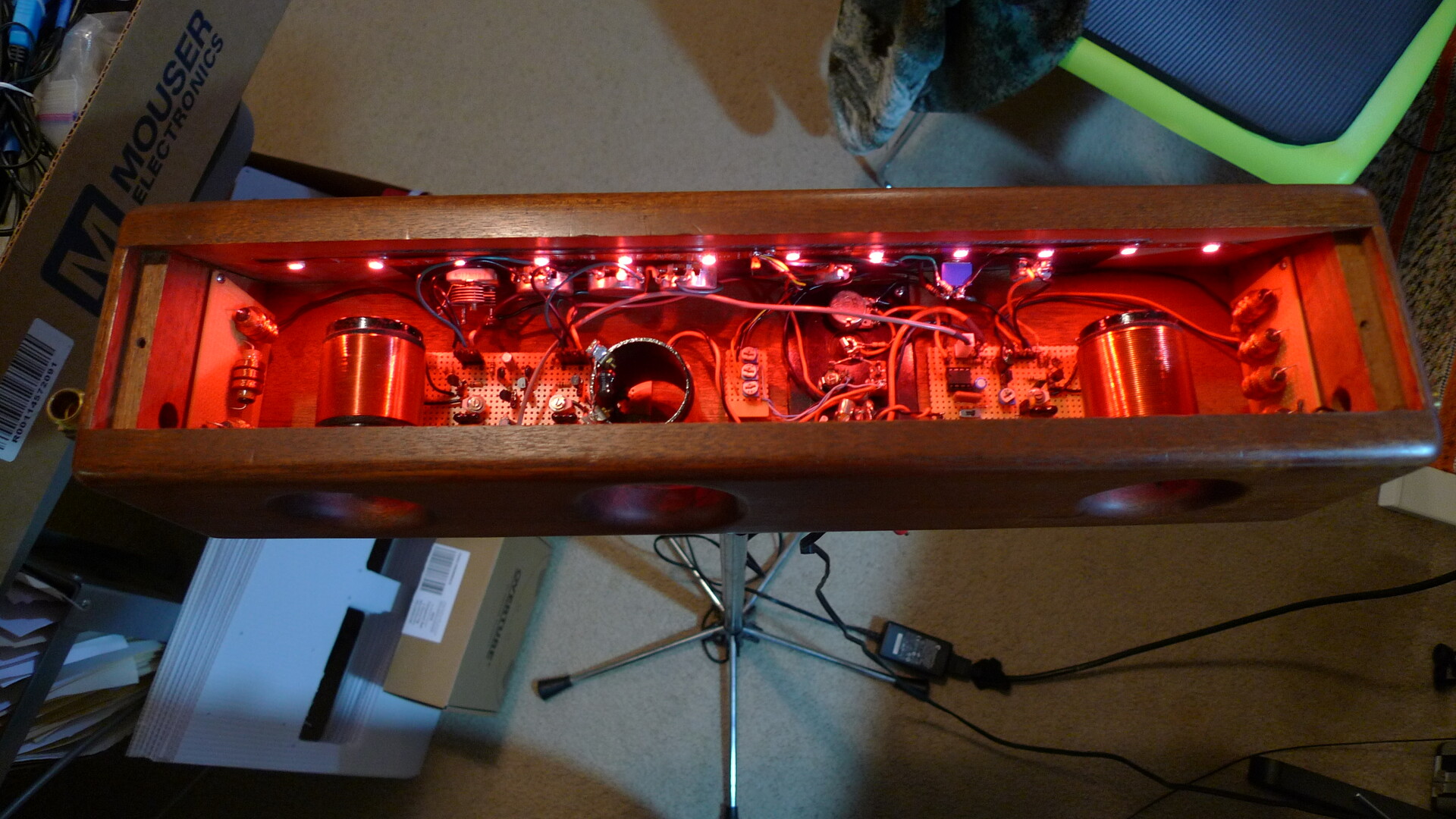
Above: An LED strip gives the interior a nice warm glow.
With this presentation, Charlie was concerned that both of the units he made for Rob are rather unusual. Indeed, the wooden one is the first one he made, and the black one was made as a backup with an enclosure built for a previously prototype. He said that neither is a really great representation of what a typical instrument from him looks like. To me, the first unit is quite historic and very much worth a particularly close look. The black unit has a cleaner and more conventional interior, with hand etched PCBs.
The fix for the intermittent operation of the black unit was mechanical in origin (>90% of electrical problems are mechanical). Apparently, one of the hand wound transformers had flexed the PCB board mount, and over time this worked one of the connections loose - bit of solder fixed it.
A big thank you to Rob & Charlie for giving us the opportunity to see this beautiful Theremin in the buff!


